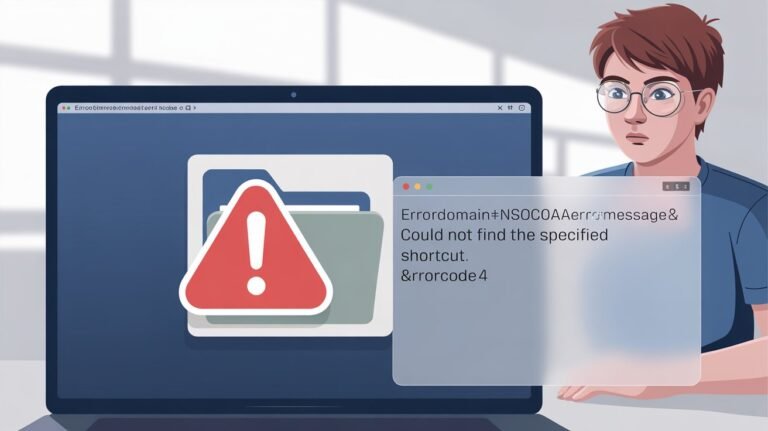Mastering Java Software Wbsoftwarement: Proven 2025 Trends & Powerful Tools
Introduction to Java Software Wbsoftwarement
Java has remained a cornerstone of enterprise-level software development for decades, and with good reason. Known for its reliability, portability, and performance, Java is the backbone of countless business applications, mobile apps, and cloud-based systems. In this article, we explore the evolving landscape of Java software wbsoftwarement—a term that captures the comprehensive approach to developing robust Java-based software solutions. Whether you’re a seasoned developer or just stepping into the world of Java, understanding the nuances of modern wbsoftwarement practices is crucial. This article dives deep into the tools, trends, and techniques shaping the Java ecosystem in 2025 and beyond.
Why Java Remains Dominant in Modern Software Wbsoftwarement
Despite the rise of newer programming languages and frameworks, Java continues to hold its ground as a top choice for large-scale software projects. The language’s maturity, extensive libraries, and well-supported frameworks like Spring, Hibernate, and Jakarta EE contribute to its enduring appeal. Additionally, Java’s Write Once, Run Anywhere (WORA) principle provides unmatched flexibility across platforms. Enterprises favor Java not only for legacy system support but also for its capability to integrate with modern technologies such as microservices, containerization, and cloud-native architectures.
Understanding the Concept of Wbsoftwarement
“Wbsoftwarement” is a coined term that blends “web,” “software,” and “development,” emphasizing a holistic and modern take on Java-based software engineering. This concept includes everything from coding and deployment to scaling and maintaining applications in dynamic environments. Java software wbsoftwarement is not just about writing code—it’s about creating resilient, scalable, and secure applications that can adapt to ever-evolving user demands and technological changes. This broader view acknowledges the intersection of development, operations, user experience, and strategic planning.
Key Trends Driving Java Software Wbsoftwarement in 2025
One of the major trends shaping Java software wbsoftwarement is the widespread adoption of cloud-native development. With platforms like AWS, Azure, and Google Cloud offering deep Java integrations, developers are increasingly building microservices using Spring Boot and deploying them in Kubernetes clusters. Additionally, serverless architectures and Function-as-a-Service (FaaS) are gaining traction, with Java functions now supported by most major cloud providers.
Artificial Intelligence (AI) and Machine Learning (ML) are also influencing Java development. Libraries like Deep Java Library (DJL) and frameworks such as TensorFlow for Java are making it easier to embed intelligent features into Java applications. DevOps practices are more tightly integrated into the development lifecycle, with tools like Jenkins, GitLab CI/CD, and Docker being essential to modern Java software wbsoftwarement.
Essential Tools for Java Software Wbsoftwarement
To succeed in Java software wbsoftwarement, having the right tools in your stack is critical. Integrated Development Environments (IDEs) like IntelliJ IDEA and Eclipse offer robust support for Java and integrate seamlessly with build tools like Maven and Gradle. Version control via Git, along with platforms like GitHub or Bitbucket, ensures collaborative development and streamlined release cycles.
Build automation and continuous integration tools are indispensable. Jenkins, Travis CI, and GitLab CI enable automatic testing and deployment, reducing manual errors and speeding up delivery. Docker and Kubernetes play a central role in containerizing Java applications and orchestrating them in scalable, production-ready environments. For monitoring and performance tuning, tools like Prometheus, Grafana, and New Relic help ensure applications remain healthy under load.
Best Practices in Java Software Wbsoftwarement
Effective Java software wbsoftwarement demands adherence to best practices that go beyond clean code. First and foremost, modular programming and clear architecture patterns—such as MVC (Model-View-Controller) and Hexagonal Architecture—help organize codebases for maintainability and scalability. Dependency injection, especially through frameworks like Spring, decouples components and enhances testability.
Security should be built into every stage of development. Implementing proper input validation, securing APIs with OAuth2 or JWT, and using HTTPS by default are essential. Unit testing with JUnit and integration testing with tools like TestContainers ensure reliability. Moreover, documenting code and maintaining meaningful version histories in Git promotes team collaboration and long-term codebase health.
Building Scalable Applications with Java
Scalability is a key concern in today’s software environment. Java excels in this area due to its multithreading capabilities and robust memory management. When designing for scale, developers should leverage asynchronous programming models and event-driven architectures. Libraries like Project Reactor and frameworks like Vert.x support reactive programming, making it easier to handle concurrent workloads efficiently.
In distributed systems, load balancing, caching, and database sharding are critical. Tools like Apache Kafka enable real-time data processing, while Redis and Memcached offer in-memory caching to reduce database strain. Using scalable databases like Cassandra or horizontally scalable SQL options such as CockroachDB ensures that data remains accessible and consistent as your application grows.
Java and the Rise of Microservices Architecture
Microservices have transformed how we build and deploy software. Java, particularly with Spring Boot and Spring Cloud, is a preferred language for creating and managing microservices. By breaking down monolithic applications into smaller, independently deployable services, teams can develop, test, and scale components in isolation.
Java software wbsoftwarement in the microservices era demands careful orchestration. Service discovery, centralized configuration, circuit breakers, and distributed tracing are all essential. Tools like Netflix OSS, HashiCorp Consul, and Zipkin integrate well with Java and support these requirements. While microservices offer flexibility, they also introduce complexity—so effective logging and monitoring, along with strong API governance, are necessary for success.
Adopting DevOps in Java Software Wbsoftwarement
The DevOps culture emphasizes collaboration between development and operations, automating workflows to speed up software delivery. In Java environments, this means automating builds with Maven or Gradle, running tests with JUnit, and deploying with Jenkins pipelines. Docker ensures consistent environments across dev, test, and prod, while Kubernetes handles orchestration.
Monitoring and feedback loops are vital. Implementing continuous feedback mechanisms—using Prometheus for metrics, ELK Stack for logs, and tools like SonarQube for code quality—helps maintain high standards. Agile methodologies like Scrum or Kanban often complement DevOps, ensuring iterative development and quick response to changing requirements. In Java software wbsoftwarement, DevOps is not optional—it’s foundational.
Preparing for the Future: What’s Next in Java Software Wbsoftwarement?
Looking ahead, Java is evolving rapidly to meet new challenges. Project Panama aims to improve Java’s native integration, while Project Loom introduces lightweight threads (fibers) to simplify concurrency. These enhancements will make Java even more capable in high-performance, low-latency applications.
Edge computing is another frontier, pushing processing closer to data sources for real-time responsiveness. Java’s adaptability ensures it will play a role here, especially in IoT (Internet of Things) applications. Blockchain integration, although niche, is also gaining attention, with Java SDKs available for platforms like Ethereum and Hyperledger.
As the industry embraces low-code and no-code solutions, Java developers will increasingly work on platform development and API enablement rather than just application coding. This shift reinforces the need for deep technical understanding and strategic thinking in Java software wbsoftwarement.
Conclusion
Mastering Java software wbsoftwarement requires more than fluency in Java syntax—it demands an understanding of modern architectures, tools, and practices that align with evolving business needs. From microservices and cloud-native applications to AI integrations and DevOps pipelines, the Java ecosystem is both deep and wide. Staying current with industry trends, continuously refining your development approach, and leveraging the right tools will set you apart in this competitive field. Whether you’re building enterprise software or the next groundbreaking SaaS platform, a solid grasp of Java software wbsoftwarement principles will ensure you’re ready for whatever comes next.
Read Also Our This Post: How to Download and Install HazeveCAD04 Version on PC (Step-by-Step Guide)







